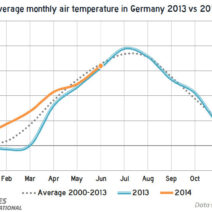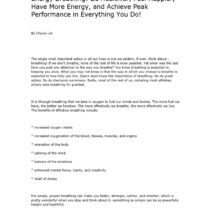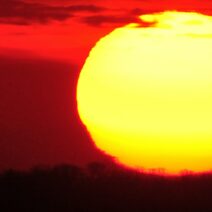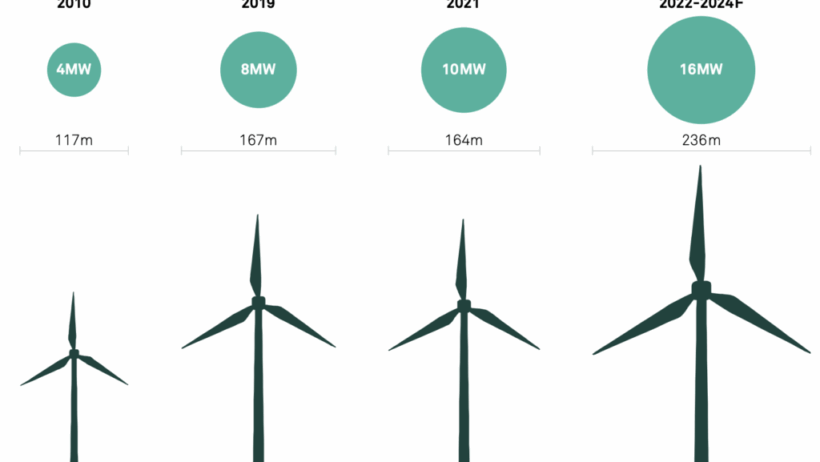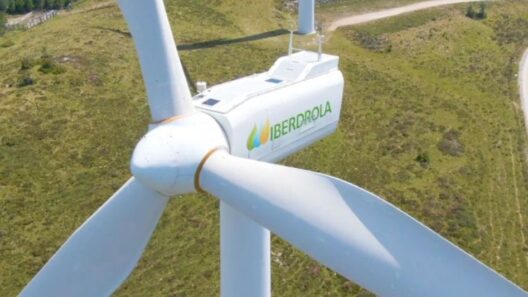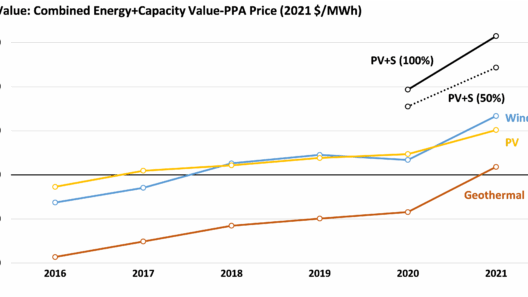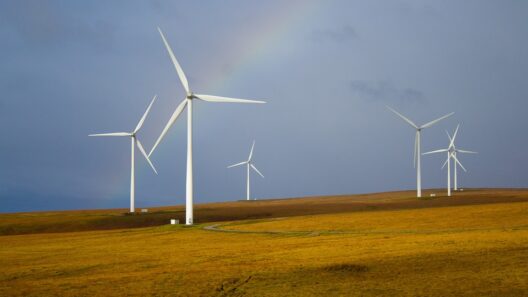The modern landscape of renewable energy is increasingly dominated by wind turbines. These magnificent structures not only serve as symbols of ecological advancement but also exemplify the intricate interplay between technology and nature. But just how much energy do these towering giants generate? Understanding the output of modern wind turbines is paramount in appreciating their place in the renewable energy paradigm.
Wind turbines harvest kinetic energy from moving air, converting it into mechanical energy, which is then transformed into electrical energy. The amount of energy a wind turbine can produce is influenced by various factors, ranging from design specifics to environmental conditions. The power output, or generating capacity, of a wind turbine is primarily measured in megawatts (MW), representing thousands of watts produced over a time period.
Modern wind turbines come in diverse shapes and sizes, with capacities ranging from small residential turbines of about 1 kilowatt (kW) to colossal offshore turbines that can produce 12 MW each. Some of the world’s highest-performing turbines are capable of generating enough electricity to power thousands of homes annually. Typical onshore wind turbines generate approximately 2 to 3 MW. However, size alone does not dictate output. Blade design and height also play critical roles in efficiency.
The allure of wind turbines lies in their aesthetic and functional harmonization with the environment. They often stand as elegant giants against the backdrop of rolling hills or expansive oceans, invoking a sense of wonder. This beauty is coupled with the pragmatic purpose they serve—transforming the inexhaustible energy of the wind into electricity, thereby contributing to the reduction of greenhouse gas emissions.
When we delve deeper into the mechanics of wind energy generation, we discover that the actual energy produced by a wind turbine throughout its operational lifespan often exceeds mere theoretical estimates. Factors such as wind speed and turbine performance rating significantly influence daily energy production. Wind turbines operate on the principle of Betz’s limit, which asserts that no turbine can capture more than 59.3% of the kinetic energy in wind. For modern turbines, this means most achieve efficiencies between 35% and 45%.
Exploring the output of an individual turbine reveals insights into pivotal aspects of wind energy. In ideal conditions, a single 3 MW turbine can produce approximately 9,000 to 10,000 megawatt-hours (MWh) of electrical energy annually. This is enough to power roughly 2,500 average American homes. For a broader perspective, a wind farm comprising 100 turbines can generate an impressive 900,000 to 1,000,000 MWh per year. Such production speaks volumes about the potential of wind energy to contribute meaningfully to energy grids.
However, output is not the sole consideration when evaluating wind energy’s impact. The geographical distribution and site suitability are equally critical. Wind farms are often strategically located in areas with consistent and strong wind patterns, such as coastal regions and plains. The siting and design of these wind installations are crucial to maximizing efficiency and minimizing environmental disturbances.
Navigating the world of wind energy also brings us face-to-face with the environmental implications. Wind energy is considered one of the greenest forms of electricity generation. Unlike fossil fuels, it does not deplete natural resources or contribute to air pollution. As nations strive to transition from carbon-intensive energy systems, integrating wind energy into the grid emerges as an especially poignant solution. The renewable energy movement is urgent; the current trajectory of climate change mandates a rigorous shift toward sustainable practices.
Moreover, wind farms foster local economic growth by creating jobs during the installation, maintenance, and operation phases. They can enhance energy security and independence, allowing regions to lessen their reliance on imported fuels. Farmers and landowners benefit as well, as they can lease their land for wind installations, merging agricultural pursuits with environmental stewardship.
Nevertheless, not everything is without critique. Some argue that the visual impact of wind farms can detract from the natural landscape. Additionally, concerns have been raised regarding the impact on wildlife, particularly birds and bats. Advances in turbine technology, including the development of bird-friendly designs and better siting strategies, are crucial in addressing these challenges.
Overall, the duality of wind energy lies in its potential and its challenges. The metrics of energy production must include not merely numbers, but also qualitative aspects such as community engagement and environmental coexistence. It’s essential to recognize that the further integration of wind power will be vital if we are to meet future energy demands without compromising our ecological integrity.
As modern wind turbines continue to rise, so too does our understanding of their capabilities and limitations. They stand as beacons of hope in the relentless pursuit of sustainable energy solutions, highlighting both the beauty of innovation and the critical need for responsible environmental action. The ongoing dialog around wind energy encourages us to embrace this dynamic shift towards a greener future, where energy production harmonizes with the natural world.
